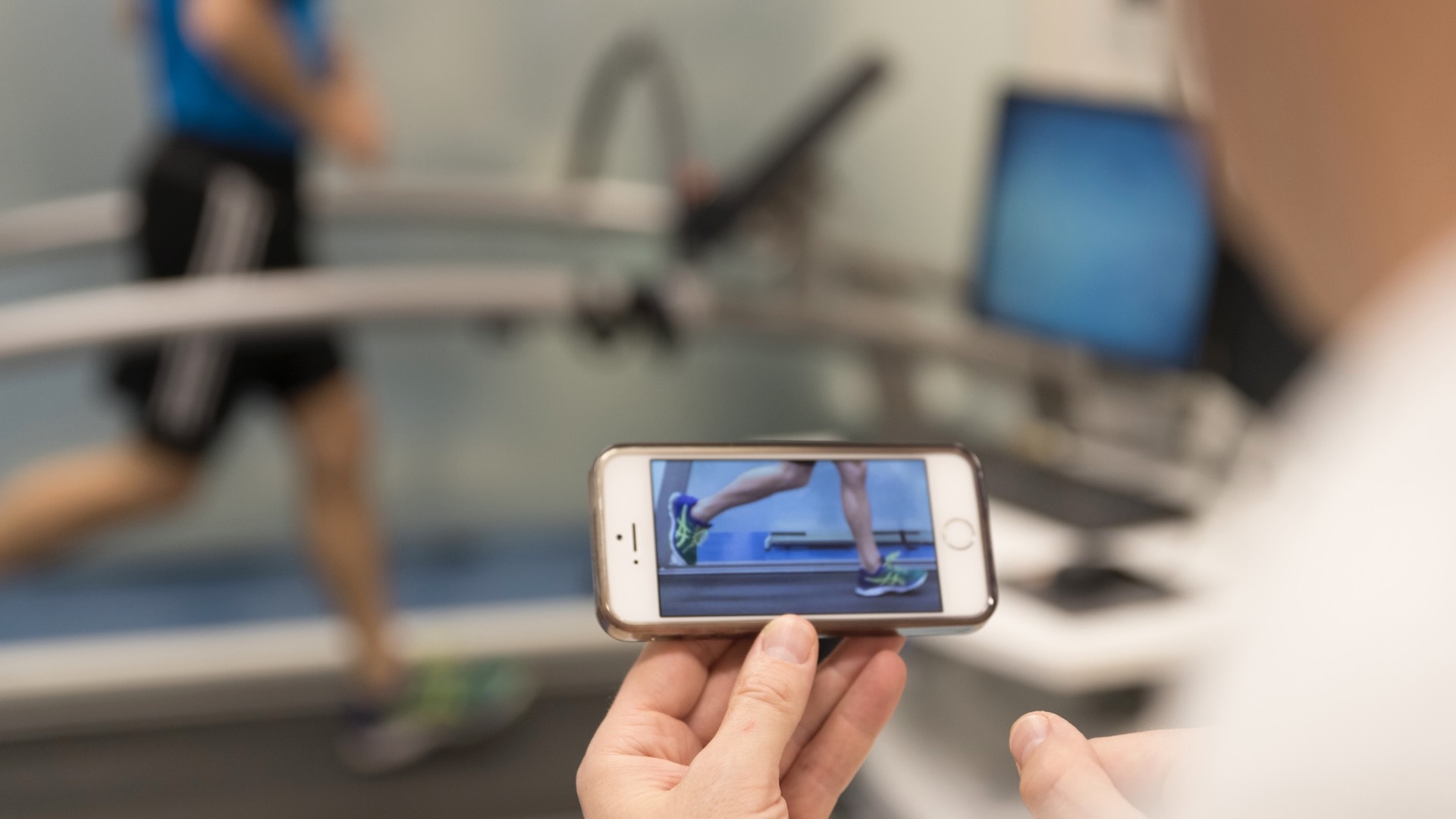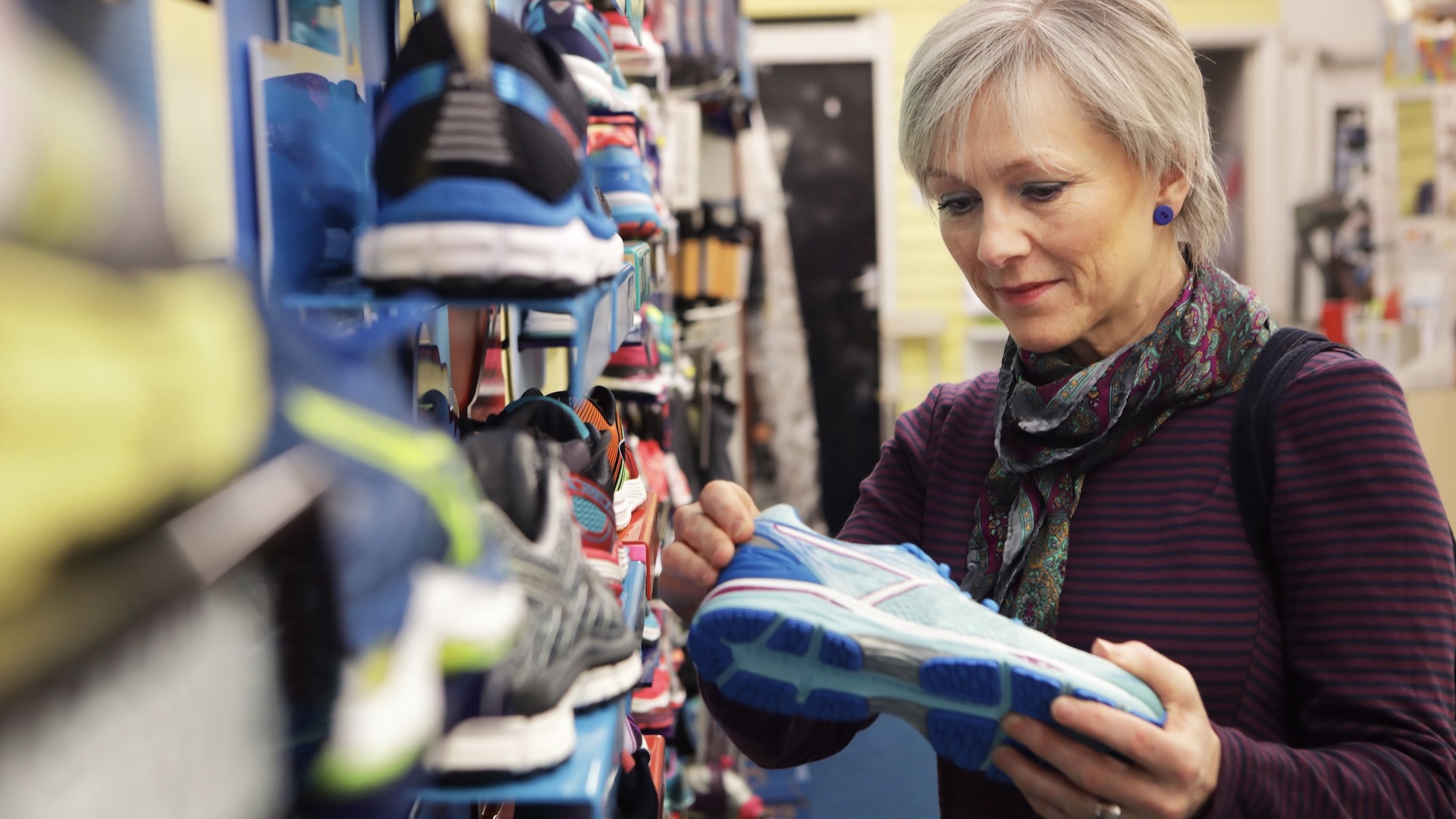How should your road running shoes fit? Advice for avoiding blisters and rubs
Tips for making sure your footwear is the right fit to avoid niggles and injuries

The choice of what to buy when looking for new running shoes, both trail running footwear and road running shoes, can be a little overwhelming. But above all the features, colours and styles, the most import factor to consider is fit. It’s also worth noting that one person’s favourite running shoe or brand might not suit another person because feet differ from person to person. We take a look at how your running shoes should fit.
Get measured
Our feet can change as we age and depending on the different sports we do, so it's worth having your feet measured to check the right size, both for length and width.

Gait analysis
If possible, ask a running store or sports specialist to do a gait analysis so you know from the start of the shoe buying process whether you need footwear to suit any pronation issues. It might be you are fine in a neutral shoe, but you may discover you need running footwear for over-pronation, or extra support.
Size up
Many runners will already know that it's recommended you go up half a size or a full size on your normal shoe size when buying running shoes. It’s often said there should be a thumb’s width at the front of the shoe, between your longest toe and the front of the toe box.
This is to allow for wiggle room in the toe-box area, especially if you run longer distances and suffer with swollen feet, or you will be doing lots of downhill running. Runners want to try to avoid their toes being bashed against the inside of the front of the shoe, so you need a bit of extra room for this in the length.

Snug not loose
However, be careful when you go up a size that the running shoes still fit snugly at the heel and the midfoot to offer proper support. If you foot moves around too much in a shoe when running, you will end up with blisters or, worse still, joint and muscle niggles caused by running footwear that isn’t properly supportive.
Do the insole test
A good way to check if you running shoe is fitting correctly is to take out the insole and lay it on the floor. Now stand on the insole and look down at your foot. The size and shape of the insole should match the size and shape of your foot. So, you don’t want to see the sides of your feet, heel or your toes spilling over the edge of the insole. Equally, you don’t want the insole to look like it’s over-large compared to your foot.
All the latest inspiration, tips and guides to help you plan your next Advnture!

Width matters
Like the extra length of the shoe for wiggle room for toes, you might also need extra width to allow for your feet to swell when running longer distances or when it is warm weather. This doesn’t mean wearing oversized running shoes, but making sure there is a bit of room at the sides of the forefoot so feet do not end up cramped inside the shoe. Some brands and models are sold in extra wide sizes.
Upper volume
The upper part pf the shoe should feet neatly, too. When the shoe is laced, it needs to be supportive but not so tight you lose circulation. Look for creasing or bunching of fabric at the forefoot when you bend your foot. If the crease is too deep, or there is too much bunching, it probably means there is too much volume at the mid-foot area of the shoe.
Likewise, look at the heel area and check the shoe hugs the ankle area and there is no obvious gap.
Final tip: How should running shoes fit?
Different brands and models of shoes will offer variance in volume and fit and so you should try on as many different shoes as you can to make sure you get a good fit.
Don't be swayed by the latest trend, the colour or brand of shoe. If possible, try to avoid buying simply because the shoes are a 'bargain'. And, above all, do not buy a running shoe simply because a friend says it is the best footwear for running.
The best running shoe for you will be the one that fits well and doesn’t lead to rubs, niggles and injuries.
- The best cheap running shoes: budget footwear that won't let you down

Fiona Russell is a widely published adventure journalist and blogger, better known as Fiona Outdoors. She is based in Scotland and is an all-round outdoors enthusiast with favorite activities including trail running, mountain walking, mountain biking, road cycling, triathlon and skiing (both downhill and backcountry). Aside from her own adventures, Fiona's biggest aim is to inspire others to enjoy getting outside and exploring, especially through her writing. She is also rarely seen without a running skort! Find out more at Fiona Outdoors.
